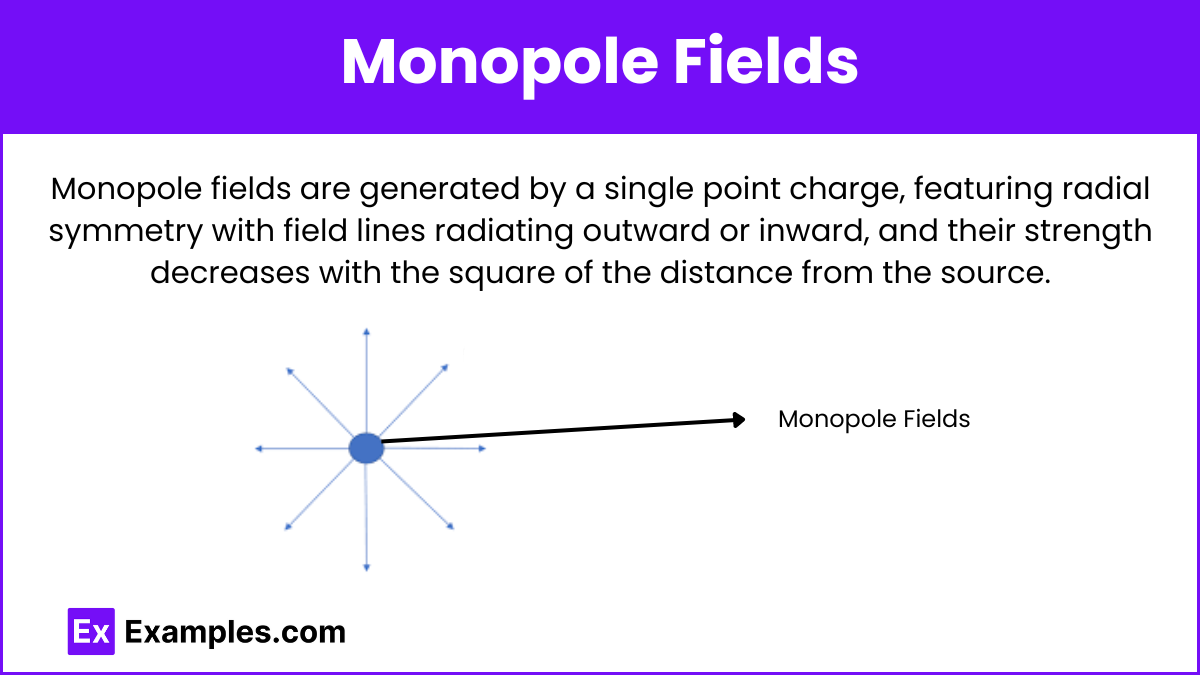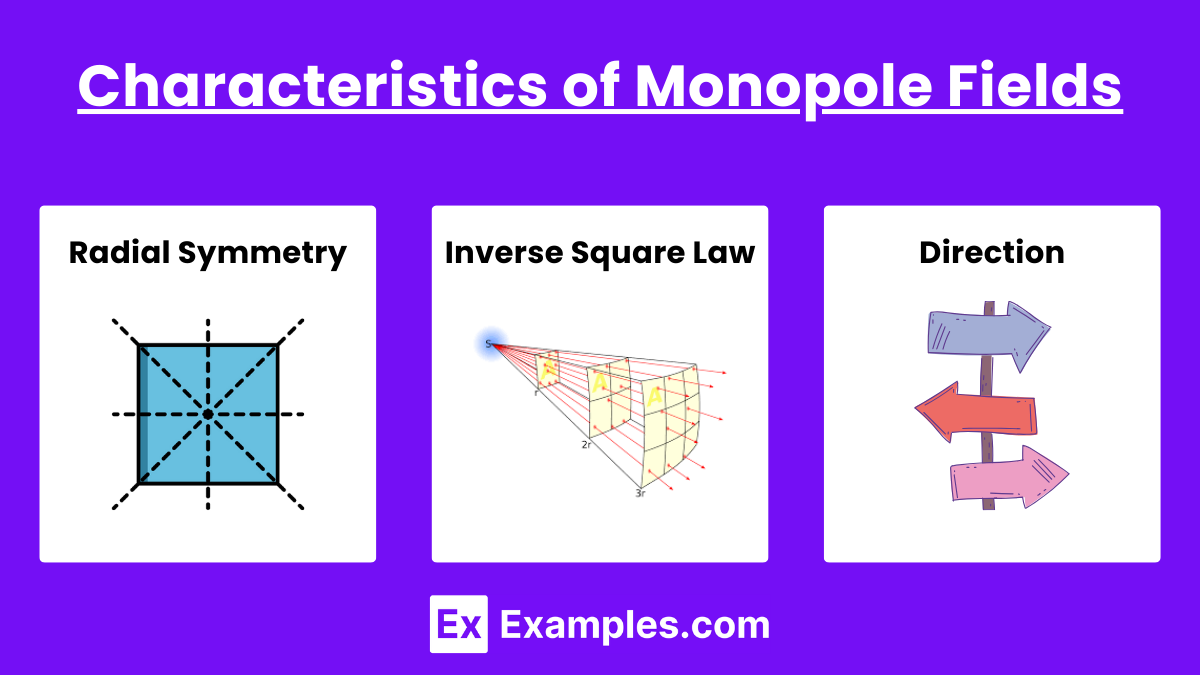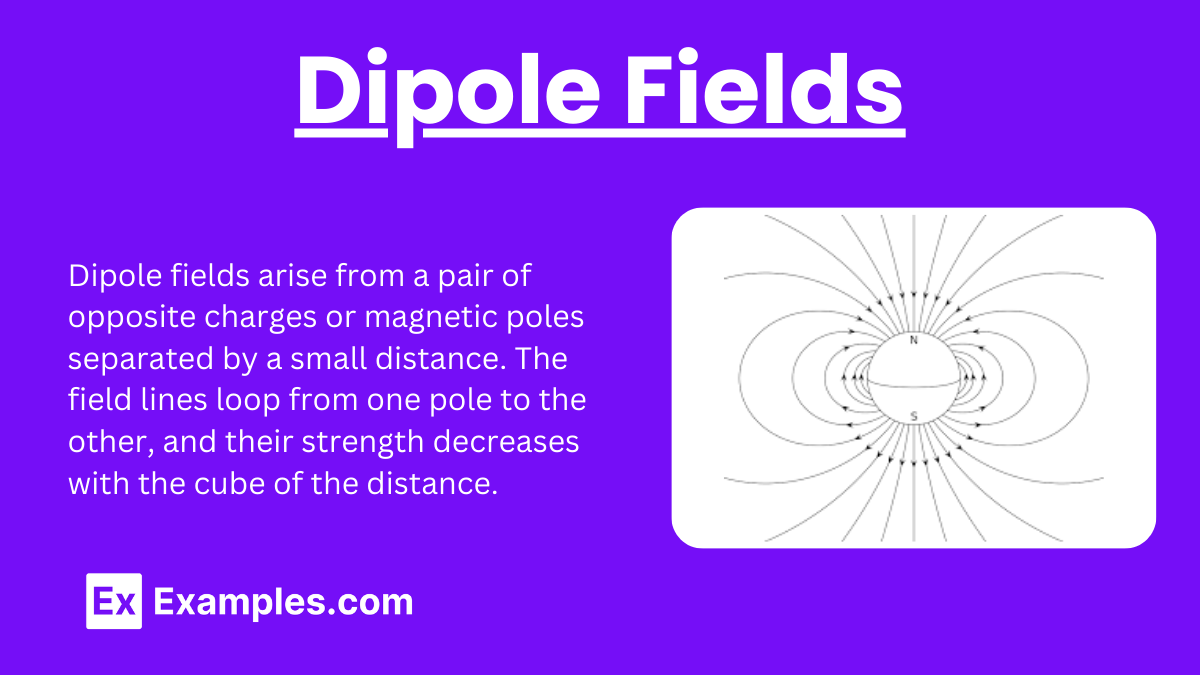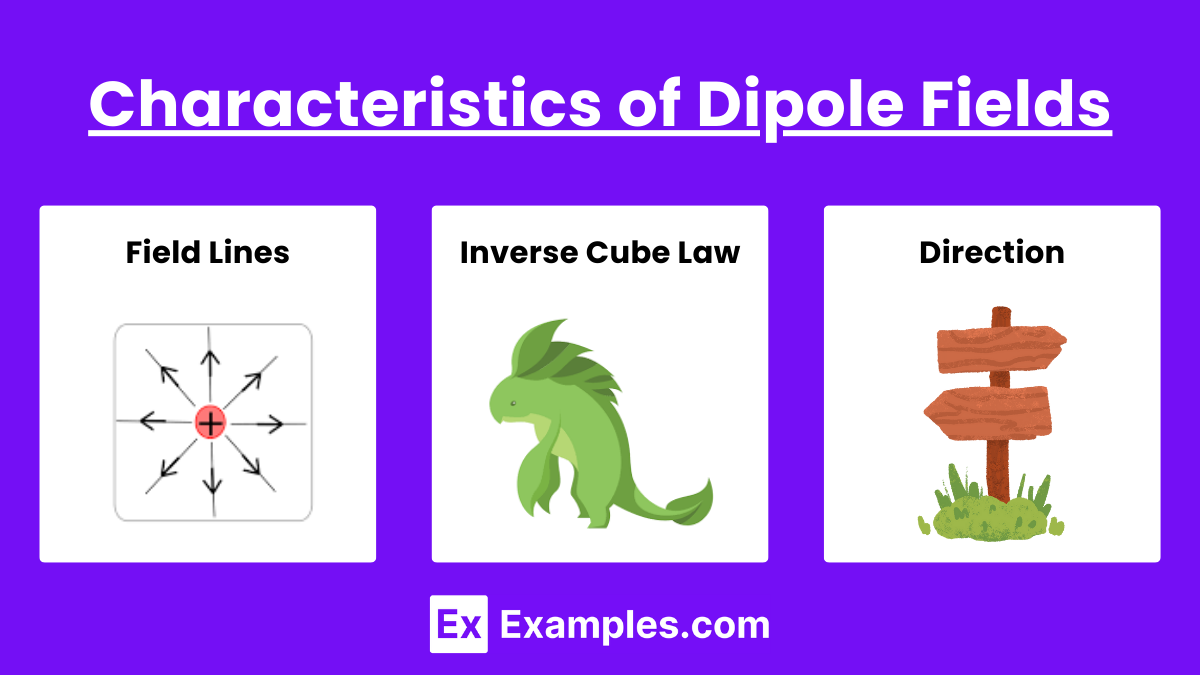Monopole and dipole fields describe the distribution of electric and magnetic fields around charges and poles. A monopole field arises from a single charge, while a dipole field comes from a pair of opposite charges or poles. In AP Physics, understanding these concepts is crucial for analyzing electric and magnetic interactions in various contexts, such as point charges, bar magnets, and molecular structures like water. Mastery of these topics aids in comprehending fundamental principles of field theory.
Learning Objectives
learn to differentiate between monopole and dipole fields, understand their characteristics and how their field strengths vary with distance. Grasp the concept of electric and magnetic dipoles, and their real-world examples. Master the visual representation of field lines for both monopoles and dipoles. Comprehend applications of these fields in electrostatics, magnetism, and molecular physics, and their relevance to phenomena like electric fields around point charges and magnetic fields around bar magnets.
Introduction
Monopole and dipole fields are fundamental in understanding electric and magnetic fields. These fields describe how forces are distributed around charges and magnetic moments, influencing how they interact with their surroundings.
Monopole Fields

A monopole field arises from a single point charge. In an electric context, this is referred to as a point charge or electric monopole. If a magnetic monopole existed, it would be analogous to an isolated north or south magnetic pole, but as of now, magnetic monopoles have not been observed.
Characteristics of Monopole Fields

- Radial Symmetry: The field lines radiate symmetrically in all directions from the point charge.
- Inverse Square Law: The strength of the field decreases with the square of the distance from the source.
- Direction: The field points outward from a positive charge and inward towards a negative charge.
Examples of Monopole Fields
- Electric Field Around a Point Charge: The electric field created by a single proton or electron.
- Gravitational Field: The gravitational field around a spherical mass, such as a planet, can be considered a monopole field since it only depends on the distance from the center of the mass.
Dipole Fields

A dipole field is generated by a pair of opposite charges or magnetic poles separated by a small distance. This pair forms an electric dipole in the case of electric charges and a magnetic dipole for magnetic poles.
Characteristics of Dipole Fields

- Field Lines: The field lines emerge from the positive charge and terminate at the negative charge, creating a pattern that loops from one pole to the other.
- Inverse Cube Law: The field strength decreases more rapidly with distance than in a monopole field, following an inverse cube law.
- Direction: The field has a directional component that depends on the orientation of the dipole.
Examples of Dipole Fields
- Electric Dipole: Created by a pair of equal and opposite charges separated by a small distance, such as a molecule like water (H₂O).
- Magnetic Dipole: Generated by a bar magnet, where the magnetic field lines emerge from the north pole and enter the south pole.
Comparing Monopole and Dipole Fields
| Feature | Monopole Field | Dipole Field |
|---|---|---|
| Source | Single charge or hypothetical monopole | Pair of opposite charges or poles |
| Field Lines | Radiate symmetrically from the source | Loop from one pole to the other |
| Strength | Decreases as 1/r² | Decreases as 1/r³ |
| Examples | Electric field of a proton, gravitational field | Electric dipole (H₂O molecule), bar magnet |
Examples of Monopole and Dipole Fields
Monopole Fields
- Electric Field Around a Point Charge: The field created by an isolated proton or electron.
- Gravitational Field of a Planet: The gravitational field around a spherical mass like Earth or the Sun.
Dipole Fields
- Electric Dipole of a Water Molecule (H₂O): The field resulting from the separation of positive and negative charges within the molecule.
- Magnetic Field of a Bar Magnet: The magnetic field lines that emerge from the north pole and enter the south pole.
- Electromagnetic Dipole Antenna: The radiation pattern of an antenna used in wireless communication, consisting of two opposite charges or currents.
Practice Test Questions on Monopole and Dipole Fields
Question 1: Which of the following best describes the nature of a monopole field?
A) Field lines loop from one pole to the other.
B) Field lines radiate symmetrically from a single point charge.
C) Field strength decreases with the cube of the distance.
D) Field strength remains constant with distance.
Answer: B) Field lines radiate symmetrically from a single point charge.
Explanation: Monopole fields originate from a single point charge, with field lines radiating outward (for positive charges) or inward (for negative charges) symmetrically. This is distinct from dipole fields, which involve a pair of opposite charges and have looping field lines.
Question 2: In the context of dipole fields, what happens to the field strength as the distance from the dipole increases?
A) It increases with the distance.
B) It remains constant.
C) It decreases with the square of the distance.
D) It decreases with the cube of the distance.
Answer: D) It decreases with the cube of the distance.
Explanation: The field strength of a dipole decreases more rapidly than that of a monopole, specifically following an inverse cube law. This means the field strength diminishes proportional to the cube of the distance from the dipole.
Question 3: Which of the following is an example of a dipole field?
A) The gravitational field of Earth.
B) The electric field around a single electron.
C) The magnetic field around a bar magnet.
D) The electric field produced by a charged capacitor.
Answer: C) The magnetic field around a bar magnet.
Explanation: A bar magnet creates a dipole field, with magnetic field lines emerging from the north pole and entering the south pole, forming loops. This is a classic example of a dipole field, where two opposite magnetic poles are involved. The other options describe monopole fields or unrelated scenarios.


